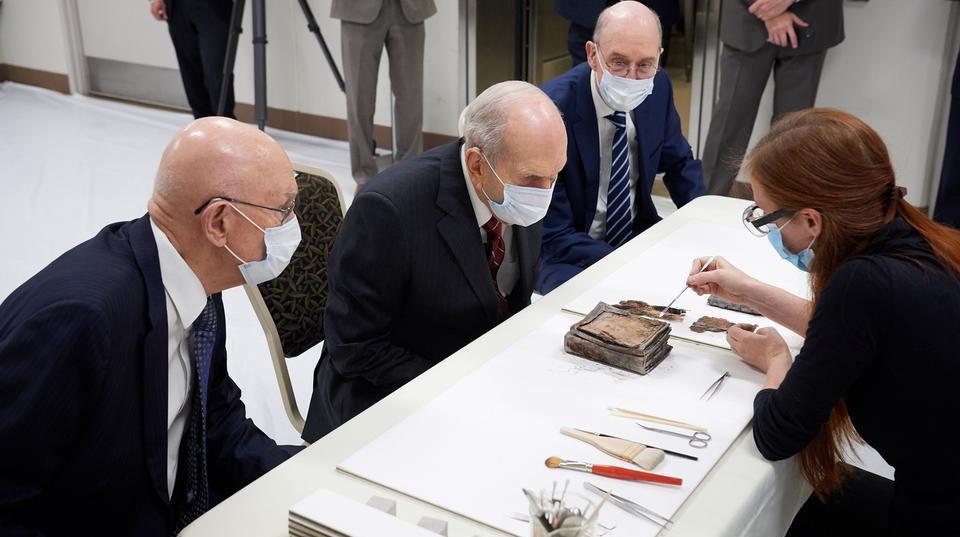The LDS history of Blacks and the priesthood BY GENELLE PUGMIRE
Daily Herald
P
erhaps the most important moment for The Church of Jesus Christ of Latter-day Saints in the 20th century was the revelation on the priesthood on June 8, 1978. Under the leadership of President Spencer W. Kimball, joined by his counselors in the first presidency, President N. Eldon Tanner and President Marion G. Romney, a special meeting was held following months, and in some cases years, of church leaders studying scriptures, church doctrine and seeking the Lord to know if the time was now right to give Blacks the priesthood. Those three men were joined in the upper room of the Salt Lake Temple by the Quorum of the Twelve Apostles that included: Ezra Taft Benson, Mark E. Peterson, Delbert L. Stapley, LeGrand Richards, Howard W. Hunter, Gordon B. Hinckley, Thomas S. Monson, Boyd K. Packer, Marvin J. Ashton, Bruce R. McConkie, L. Tom Perry and David B. Haight. While Benson, Hunter, Hinckley and Monson went on to serve as presidents of the church, all those who were in the temple at the time of the revelation on the priesthood have since died. However, their influence and testimony on what happened that day, and leading up to it, will remain a turning point for the church.
Black history
The historical significance of Blacks in the church is a part of the greater story on the 1978 revelation. Numerous books and papers have been written on the subject. There is no doubt among scholars that Edward Kimball’s book and papers on his father’s experience is perhaps the best and most personal collection available. “When the Church was very young a few Black men were ordained to the priesthood. But soon such ordinations ceased, and a tradition grew, supported by common Christian beliefs and certain scriptural interpretations, that African Blacks bore the burden of a curse levied by God on Cain and his posterity, which precluded them from participating fully in the life of the Church,” Edward Kimball writes. “After World War II, the civil rights movement grew powerfully, calling for
COURTESY INTELLECTUAL PROPERTIES
A congregation in Madagascar holds worship services outdoors prior to baptizing new members into the Church, Aug. 31, 2020. equal legal and social status for Blacks. The movement gained strength through the 1960s, resulting in strong criticism of the church for its exclusion of Blacks from the priesthood and the temple, motivating some church leaders to brace against attack and others to ask whether the time had come to seek a change,” Kimball added. The Blacks-and-the-priesthood story most often begins with Joseph Smith and Elijah Abel. Other stories include Green Flake, Samuel D. Chambers and others. One of the most notable Black women in the church is Jane Manning James. Members in the 21st century are just beginning to hear their stories, as before now they were rarely reported.
Long forgotten
“By the twentieth century, the origin of the restriction on Blacks having the priesthood had receded far enough into the past that it carried the sanctity of long-established tradition,” Edward Kimball said. “Most Mormons felt satisfied that it had a scriptural basis, even though the cited passages were at best ambiguous.” Please see PRIESTHOOD, Page A18
Be inspired... then come see us!
Pre Season Sale on Lawn & Garden Equipment! Customer Satisfaction #1 Goal! Over 40 Years Serving Northern Utah
Sales Service & Parts
DAY POWER EQUIPMENT COMMERCIAL & RESIDENTIAL MOWERS • TILLERS • RIDERS • TRIMMERS
5990 S. 1900 W. Roy
801 825-3125
Open Monday-Saturday Financing Available
Fall 2020




